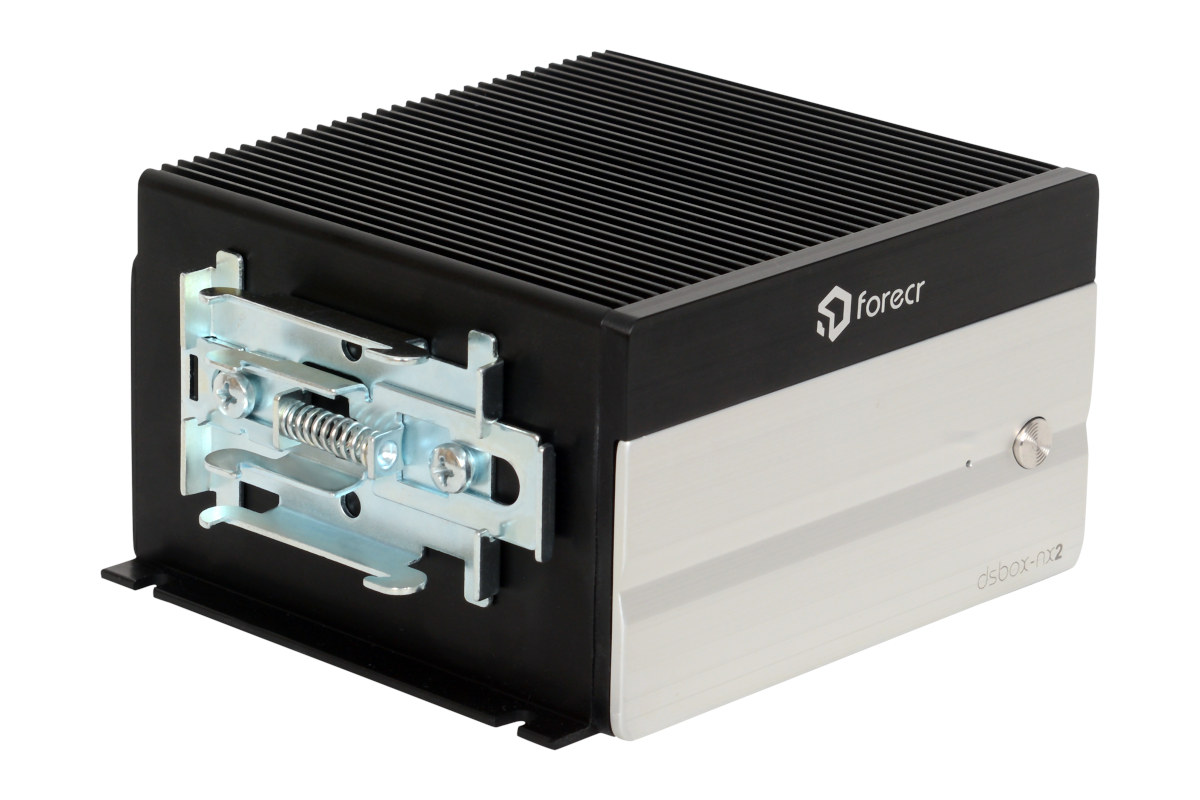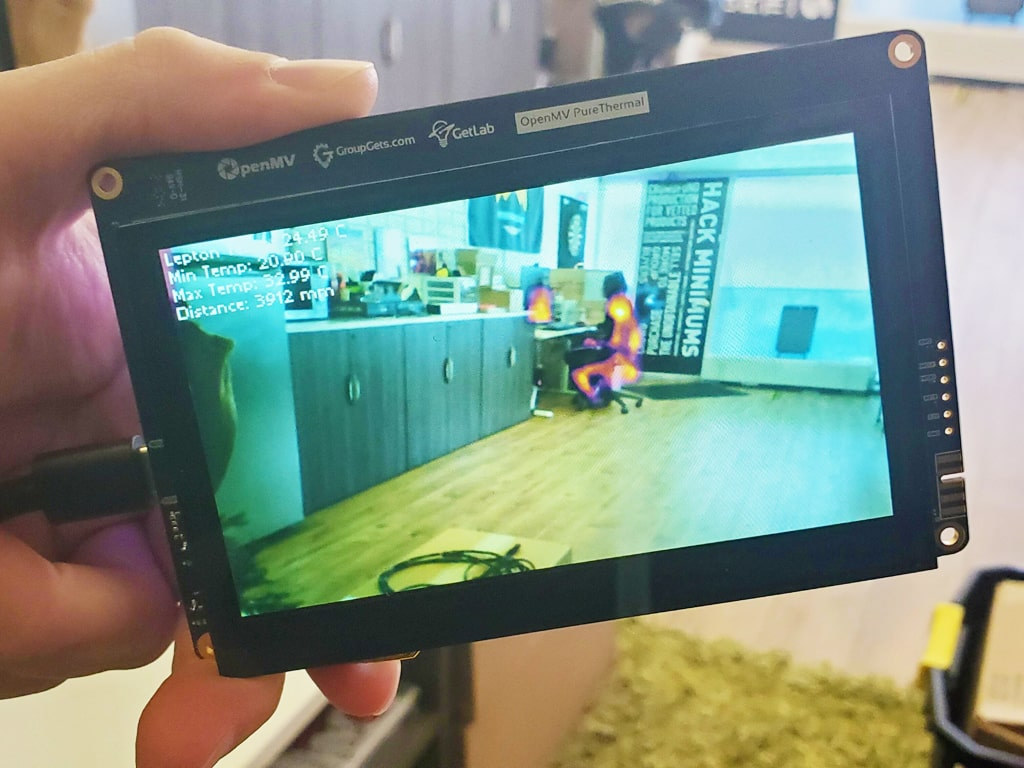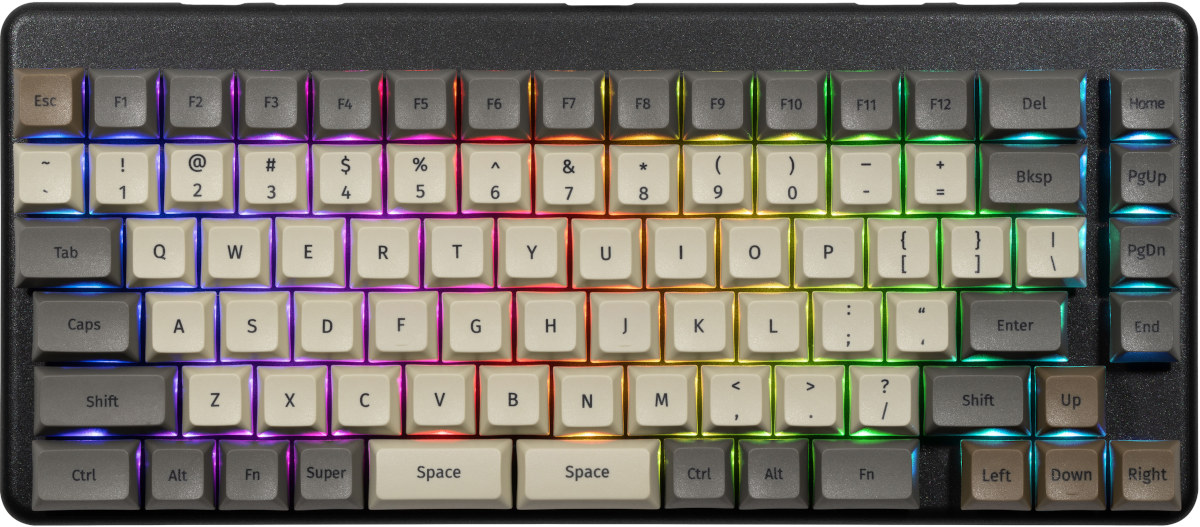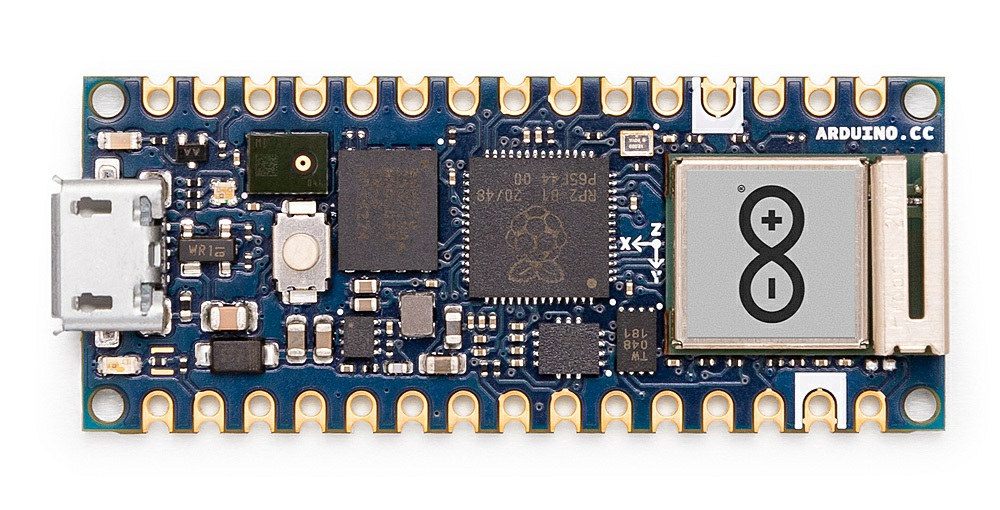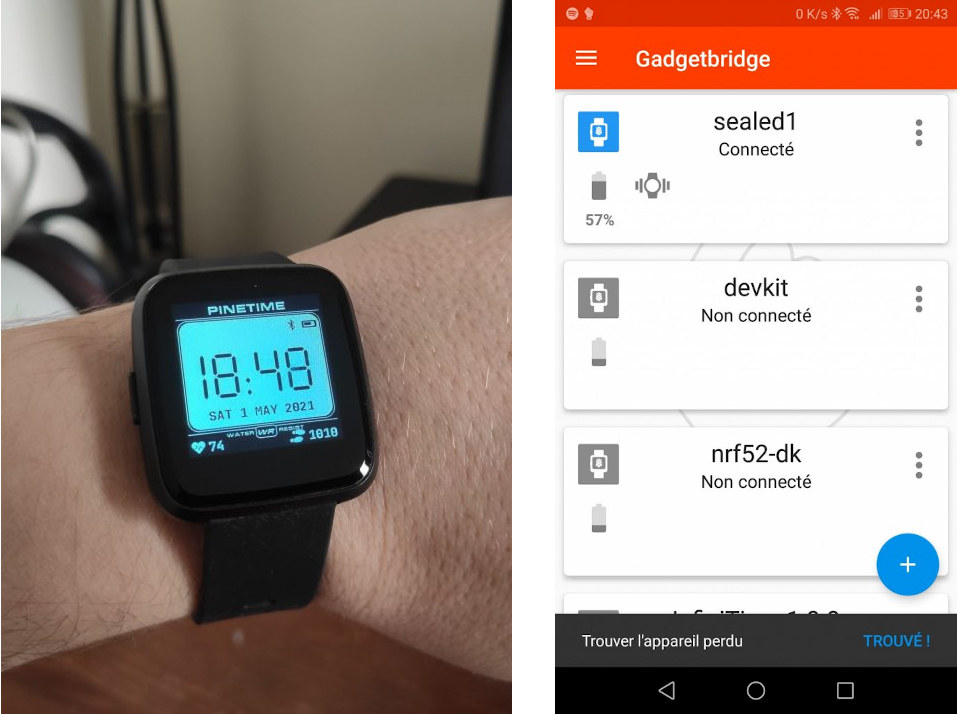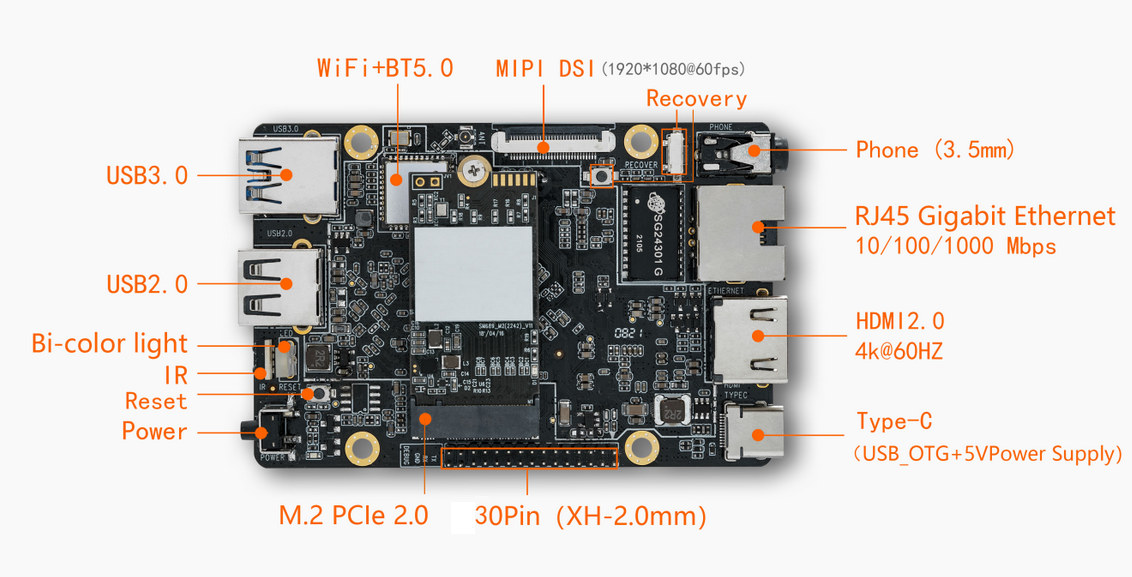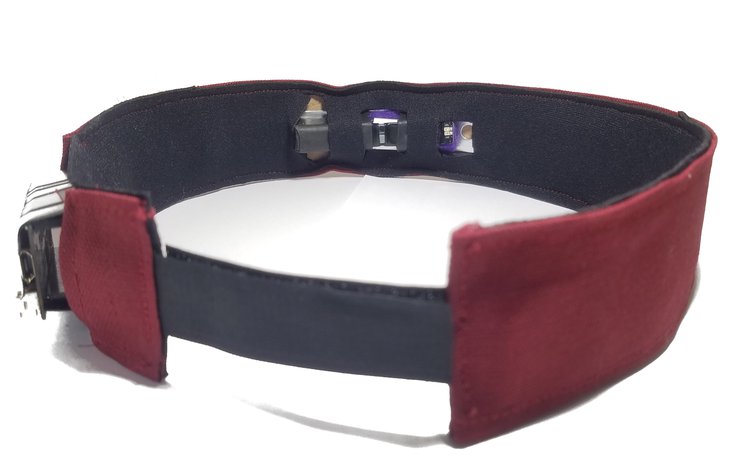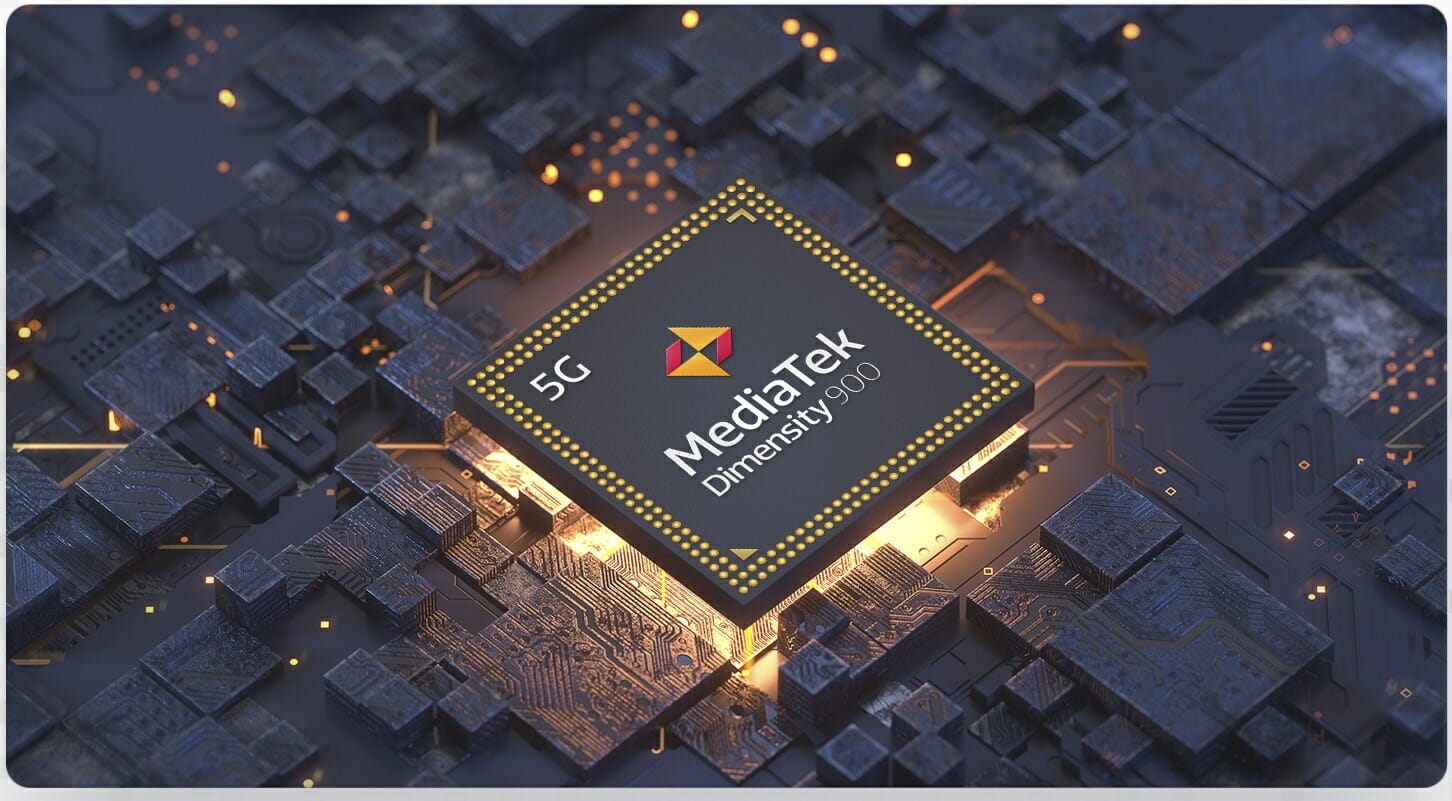Turkish company Forecr has launched DSBOX-NX2 NVIDIA Jetson Xavier NX based industrial fanless PC equipped with the company’s own DSBoard-NX2 carrier board and designed for “multi-stream deep learning edge analytics” and IIoT applications. The compact embedded computer comes with 8GB RAM, up to 2TB SSD storage, as well as HDMI 2.0 output, Gigabit Ethernet, two USB 3.1 ports for high resolution cameras, serial ports, and some GPIOs among other features. Forecr DSBOX-NX2 specifications: System-on-Module – NVIDIA Jetson Xavier NX module with hexa-core NVIDIA Carmel ARM v8.2 64-bit processor, NVIDIA Volta GPU with 384 CUDA core & 48 Tensor Cores, 8 GB 128-bit LPDDR4x, 16GB eMMC flash Storage – M.2 Key M SSD slot, MicroSD card slot Video Ouput – 1x HDMI 2.0 up to 3840×2160 at 60 Hz Networking Gigabit Ethernet Wireless – WiFi, Bluetooth, 4G LTE, 5G connectivity by extension sockets USB – 2x USB 3.1 Type-A Expansion 1x […]
OpenMV PureThermal STM32H7 board overlays thermal map on RGB image
We’ve been writing about OpenMV open-source camera boards programmable with MicroPython at least since 2015, with the latest model OpenMV Cam H7 based on STM32H7 Cortex-M7 microcontroller introduced in 2018. But the company has now gone a step further with OpenMV PureThermal board equipped with a more powerful STM32H7 dual-core Arm Cortex-M7/M4microcontroller, and supporting FLIR Lepton 2 to 3.5 thermal imagers, allowing the system to overlay the thermal map on top of the image like an augmented reality app would do. It can do so on the integrated LCD display or on an HDMI display. OpenMV PureThermal features & specifications: MCU – STMicro STM32H7 Arm Cortex-M7 @ 480 MHz) and Cortex-M4 @ 240 MHz microcontroller Memory – 64MB SDRAM Storage – 32 MB of QSPI flash for the firmware, a microSD card slot for saving pictures and machine vision assets Display 800×480 touch Screen LCD DVI out for driving an […]
System76 Launch is an open-source hardware, configurable keyboard
System76, the company better known for its Linux laptops, has launched an open-source hardware, configurable keyboard. Meet System76 Launch. The keyboard firmware, schematics, and mechanical files are all open-source. Launch ships with an ANSI US QWERTY layout but can be customized through a configuration program for Windows, Linux, and macOS, and a key puller is included to easily replace/change keycaps as needed. System76 Launch keyboard specifications: Open-source custom PCB Individually addressable RGB LED backlighting N-Key Rollover to detect all keystrokes no matter how many keys are pressed simultaneously Sockets and Switches Kailh MX Hotswap Sockets Kailh Box Jade or Kailh Box Royal Switches Key Caps – PBT plastic, dye sublimated legend, XDA profile Layout – ANSI US QWERTY Integrated USB hub with 2x USB 3.2 Gen 2 Type C (Up to 10 Gbps), 2x USB 3.2 Gen 2 Type A (Up to 10 Gbps) Open-source milled chassis design with detachable […]
Arduino Nano RP2040 Connect WiFi & Bluetooth board launched for $25.50
The Arduino Nano RP2040 Connect board was announced the day of Raspberry Pi Pico launch as one of the third-party boards featuring Raspberry Pi RP2040 dual-core Cortex-M0+ microcontroller. At the time all we had was renders of the board, later on, the company showcased some mass product photos, and then released Arduino Core mbed 2.0 for the board last month. But it’s only today that it has become possible to purchase Arduino Nano RP2040 Connect board for $25.50 on Arduino store with headers. Nano RP2040 Connect specifications: MCU – Raspberry Pi RP2040 dual-core Cortex M0+ microcontroller @ 133 MHz with 264 kB of embedded SRAM Storage – 16MB Flash IC (AT25SF128A) Connectivity – WiFi 4 & Bluetooth LE via Nina W102 uBlox module (Yes, that’s an ESP32 module.) USB – Micro USB port I/Os via 2x 15-pin headers (through and castellated holes) 20x digital I/O pins, 20x PWM pins, 20x […]
Why you should request open-source software for your IoT devices
I usually think of open-source hardware and/or software are enabling skilled people to more easily fix bugs, improve on the design, get feedback from the community, etc… But in a world where IoT devices become more prevalent, there’s another reason why you should request open-source software: Long term support. What made me think about are two things. The first one if that I own WeLoop Hey 3S smartwatch, which I love and wear since March 2018. That’s quite a feat since most cheap devices I own often only last a few months or a year or so. I’m also used to the watch face and Weloop app interface. So what’s the problem exactly? WeLoop company closed on December 31, 2019, and while the app worked fine for about a year after that, recently I have been unable to login to the app to access my data and/or update settings for […]
ROC-RK3566-PC single board computer supports up to 8GB RAM, M.2 NVMe SSD’s
Firefly has now launched a Rockchip RK3566 single board computer named ROC-RK3566-PC, following the launch of Station P2 RK3568 mini PC on Indiegogo last March, and the completion of the campaign a few days ago. The quad-core Cortex-A55 SBC supports up to 8GB ECC memory, up to 128GB flash, M.2 2242 MVMe SSD’s, HDMI 2.0 and MIPI DSI video interfaces, Gigabit Ethernet, and more. ROC-RK3566-PC specifications: SoC – RockChip RK3566 quad-core Cortex-A55 @ up to 1.8GHz with Arm Mali-G52 2EE GPU with support for OpenGL ES 1.1/2.0/3.2. OpenCL 2.0. Vulkan 1.1, 0.8 TOPS NPU, 4Kp60 H.265/H.264/VP9 video decoder System Memory – 2GB, 4GB, or 8GB LPDDR4 RAM with support for “all-data-link ECC” (TBC: Because the info I have so far is that ECC is supported on RK3568, not on RK3566) Storage 32GB, 64GB, or 128GB eMMC flash M.2 PCIe 2.0 socket for M.2 2242 NVMe SSD MicroSD card slot Video […]
HEGduino V2 supports fNIRS and Blood-Flow Monitoring (Crowdfunding)
AlasKit has launched a crowdfunding campaign on Crowd Supply for HEGduino V2. The device features noninvasive optical imaging through fNIRS (Functional near-infrared spectroscopy), apart from its brain blood flow monitoring functionality. We saw the previous version of the HEGduino in September 2019 which only supported blood flow monitoring. But the HEGduino V2 also monitors breathing, heart rate, and skin temperature. HEGduino V2 has a MAX86141 optical pulse oximeter cum heart-rate sensor for incorporating Heart Rate Variability (HRV) training. It also allows breath and skin temperature monitoring. The sensor has a specification of 2×4096 SPS sensing with a 19-bit resolution which is a bit higher than its previous version. As HEGduino V1 had an 860 SPS sensing with a 16-bit resolution. However, the practical application observes even lesser values for HEGduino V1. Setup of HEGduino V2 The device also comes with an ESP32 breakout board with rechargeable battery support. The board […]
MediaTek Dimensity 900 6nm SoC brings UFS 3.1, LPDDR5 to mid-range 5G smartphones
Arm Cortex-A78 and LPDDR5 would have been premium features not so long ago, but time flies, and the just-announced MediaTek Dimensity 900 5G SoC for mid-range smartphones includes two Cortex-A78 cores, six Cortex-A55 cores, support for LPDRR5/4 memory, UFS 3.1 storage, and of course 5G cellular connectivity up to 2.77Gbps. The mobile processor’s multimedia capabilities are pretty good as well with support for displays up to 2520 x 1080 resolution at 120 Hz, up to 108MP camera, 4Kp30 video with H.265, H.264, AV1, as well as an Arm Mali-G68 MC4 GPU and third-generation APU 3.0 AI accelerator. MediaTek Dimensity 900 specifications: CPU – Octa-core DynamIQ processor with 2x Arm Cortex-A78 @ Up to 2.4GHz, 6x Arm Cortex-A55 @ Up to 2GHz GPU – Arm Mali-G68 MC4 AI Accelerator – MediaTek APU 3.0 VPU Video Encoding – H.264, H.265 / HEVC up to 4K @ 30FPS Video Playback – H.264, H.265 […]


